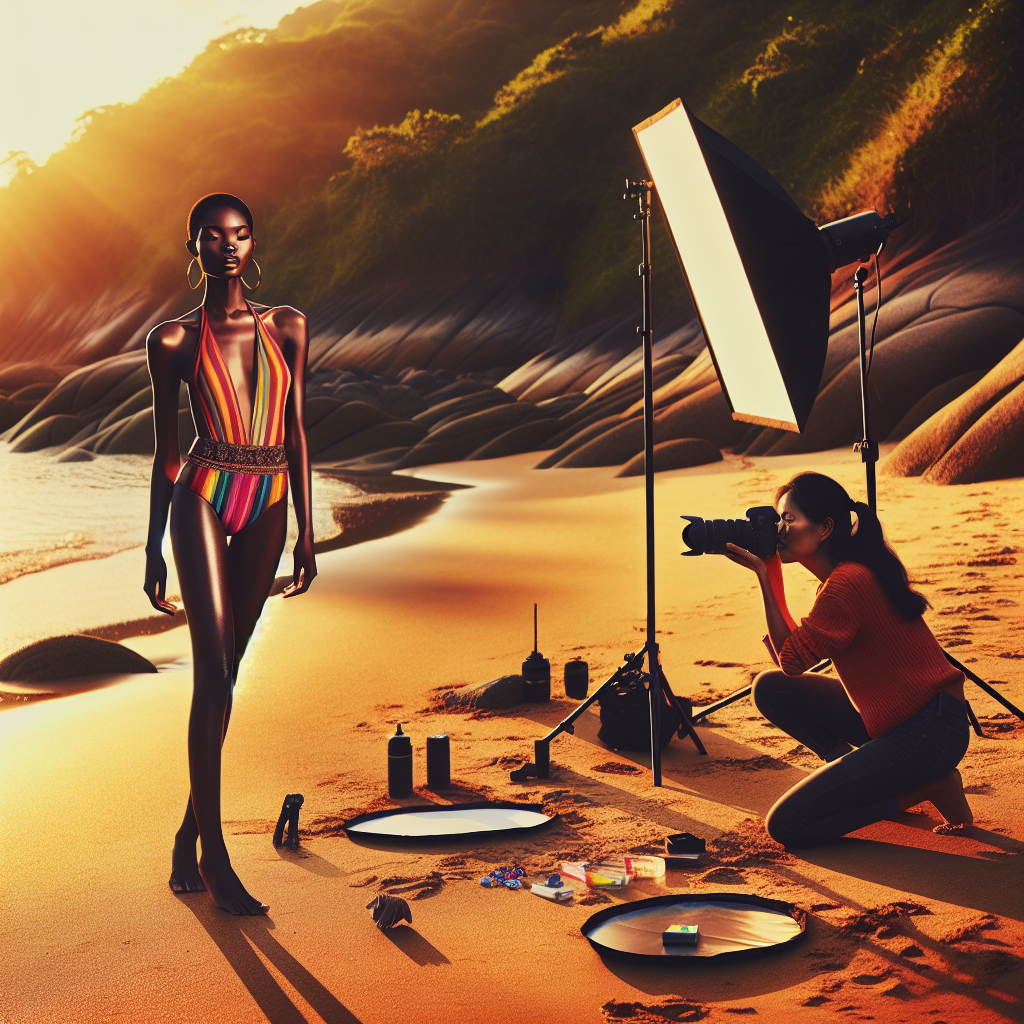1. Understanding Natural Lighting in Photography
Natural lighting is a crucial element in photography, especially in bikini shoots, where the goal is to highlight skin tones and the details of swimwear. Understanding the quality, direction, and color of natural light can significantly enhance your images. The soft light of early morning or late afternoon, often referred to as the “golden hour,” offers a warm, flattering glow, reducing harsh shadows.
2. The Best Times for Shooting
Timing is everything when it comes to working with natural light. The golden hour occurs roughly one hour after sunrise and one hour before sunset. During these times, the sunlight is more diffused, creating an ethereal quality that lends itself beautifully to bikinis, accentuating colors and textures. Conversely, midday sun can create stark shadows and highlights, which may not be flattering, so scheduling shoots around these peak hours is ideal.
3. Location Matters
Choosing the right location plays a significant role in how natural light interacts with the model and the surroundings. Beaches, poolsides, or rocky shorelines provide captivating backdrops filled with natural reflections and diffusions. Look for locations that offer variances in light—like shaded areas, open sunlight, and reflective surfaces—that can enhance the shoot’s dynamism.
4. Using Reflectors
In scenarios where shadows are unavoidable, reflectors can be a photographer’s best friend. A simple white or silver reflector can bounce light back onto the model, filling in any harsh shadows and ensuring the skin tone remains even. This technique allows for more control over how the light fabricates the outlines and textures of the bikini.
5. Understanding Light Direction
The direction of the light influences how the model is portrayed. Backlighting—shooting with the sun behind the subject—can create a stunning halo effect, perfect for evoking feelings of freedom and femininity often associated with bikini wear. Side lighting can add depth and dimension, accentuating the curves of the body and creating a three-dimensional feel in the photograph. Experimenting with various angles will yield different moods in your final shots.
6. Adjusting White Balance
Color balance is essential to optimize the quality of your images. Depending on the time of day and weather, daylight can shift from warm yellows to cool blues, altering the appearance of the swimwear and skin tones. Adjusting the white balance on your camera settings or in post-processing will help maintain accurate colors, ensuring the vibrancy of the bikinis shines through.
7. Cloud Coverage and Overcast Days
Don’t shy away from cloudy days. Overcast skies can create a softbox effect, diffusing sunlight and eliminating harsh shadows. This condition allows for even skin tones and fabric textures while capturing the model’s natural beauty. Additionally, colors can appear more saturated under these conditions, enhancing the overall image quality.
8. Utilizing Intentional Shadows
Shadows can add drama and depth to your bikini shoots. By strategically positioning the model, you can create captivating silhouettes or playful patterns across the image. This technique not only enhances the aesthetic appeal but also invites a narrative element to the photos, attracting viewers’ attention.
9. Incorporating Environment and Elements
Including the surrounding environment can add interest and context to your shots. Utilizing elements like sparkling water, sandy beaches, or vibrant foliage not only acts as a stunning backdrop but also contributes to the overall composition. Look for opportunities to harmonize the bikini’s colors with its environment—bold colors can stand out against a muted background, while softer tones might work beautifully against tropical foliage.
10. Experimenting with Angles and Perspectives
Experimentation is key to capturing the essence of a bikini shoot. Tilt your camera, change your vantage point, or try shooting from above or below to provide unique perspectives and emphasize lines. These varied angles can reveal movement, create a sense of story, and bring forth the essence of summer effortlessly.
11. Post-Processing Techniques
The job doesn’t end when the photo is taken; post-processing is vital in maximizing the beauty of natural light. Tools like Lightroom or Photoshop allow for enhancing brightness, contrast, and shadows. Be cautious with over-editing; the goal is to maintain the natural feel that attracted you to that particular lighting situation.
12. Creating an Efficient Workflow
Plan your shoot meticulously, taking into account the position of the sun at different times of day. Have a checklist of the equipment you need such as reflectors, lenses, and appropriate settings. An organized approach ensures you maximize the fleeting moments of ideal lighting, leaving less time for adjustments and more for creativity.
By grasping the nuances of natural lighting and its applications in bikini shoots, photographers can vastly improve their work, delivering striking images that reflect the beauty, vibrancy, and spirit of summer.



